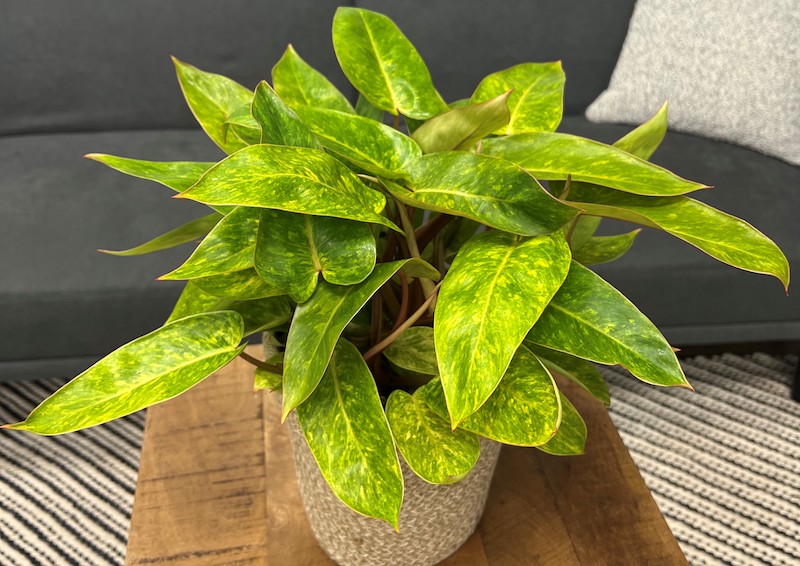Growing Philodendron
Philodendron is a genus of plants that come in many colors and shapes, but all Philodendrons are leafy beauties. Philodendrons are easy-care plants with heart-shaped leaves that can be solid green or have variegation, like the Philodendron Birkin, Philodendron Brasil, or the Philodendron Pink Princess. Vining Philodendron plants can grow lengthy stems loaded with leaves.
Place vining plants in a hanging basket or on a high shelf so the foliage can cascade down. With time and patience, vining Philodendron plants can be trained to grow on a trellis or support. Non-climbing Philodendrons have an upright growth habit, with stems growing from a central point. Philodendrons are excellent plants for beginners and experts alike.

Philodendron Sunlight Requirements
Choose a spot that receives bright indirect light for Philodendrons. This tropical plant grows under a tree canopy in nature, so it needs dappled light to thrive. Select a spot slightly set back from a south- or west-facing window. Leaves may turn yellow if they fail to receive enough light, so rotate the plant to ensure even exposure on all sides.
Planting Philodendron
Plant Philodendrons in rich, moist soil that promotes drainage. A soil with high organic content or added slow-release fertilizer will support growth and keep this beauty pushing out new foliage. Philodendrons are tolerant plants and can handle living in cramped conditions, but they prefer room to spread out. While this plant will survive when root-bound, growth will slow. Repot Philodendron plants when the roots begin to grow through the drainage holes in the container. Select a larger pot or separate the plant into smaller sections and repot them in an appropriately sized container.

Watering Philodendron
Philodendrons have medium water needs, and the best way to determine when the plant needs water is to feel the soil. Water Philodendron plants when the top inch of soil is dry. The signs of over-watering and under-watering are similar, so feeling the soil is the most dependable method of determining the ideal time to water. Vining Philodendrons tend to have higher water needs than non-climbing cultivars, so while these different types have similar care needs, they differ in this regard. Philodendrons like increased humidity and may require a pebble tray or humidifier to satisfy their needs.
Fertilizing Philodendron
Rich soil promotes new growth and helps Philodendrons look their best. Feed Philodendrons using a balanced, water-soluble fertilizer. Dissolvable plant food can be included as part of regular watering and will keep the plant healthy and growing. Feed plants when actively growing, generally during the spring and summer. Take a break from fertilizing plants during the fall and winter as growth slows.
Common Philodendron Problems
Improper watering and sunlight are the most common problems with Philodendrons. Yellowing leaves indicate water stress, and leggy or straggly growth can occur when the plant does not receive enough sunlight. Adjust care accordingly when any of these symptoms appear. Trim leggy sections to promote a more compact form, and use the removed sections to propagate new plants if desired.

Propagating Philodendron
Philodendrons are easy to propagate via cuttings. Use sterilized shears to remove a stem section with at least two leaves, growth nodes, or aerial roots. Place the cut end in soil or water. Keep the soil consistently damp for plants propagated in soil. Water-propagated plants should set roots in a few weeks and can be moved to soil when the roots are at least one inch long.
Growing Philodendron Outdoors
Move your Philodendron outdoors during the warmer months to enjoy the leafy foliage in an outside living area. Plants grown outdoors need filtered light and may not need water as often due to rainfall and heavy dew. Continue to monitor the soil, and water when the top layer dries out. Remove excess water from a cover pot or saucer to avoid root rot. Routinely inspect the leaves for signs of pests and preemptively spray the plant with a horticultural oil to ward off insects. Move Philodendrons back inside before the temperature turns cold.
 |
Author Alison Cotsonas - Published 3-02-2023 |
